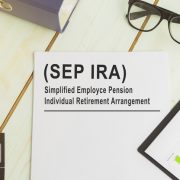How To Maximize Tax-Free Retirement Income
Self-Directed IRA owners and future retirees are facing a retirement conundrum: The Federal Government is likely to be forced to raise income taxes in future years – just to meet increasing demand for government spending, and to cover the unfunded commitments of Social Security and Medicare.
Furthermore, simply earning more money or working into retirement is going to be subject to a law of diminishing returns: It’s not just that earning more money is going to push more income into a higher marginal tax bracket – though that’s certainly a factor. It’s also that the direct tax on income from work and from IRA distributions in retirement is going to be magnified by increasing exposure to tax on Social Security benefits. It’s a double whammy.
But wait – it’s even worse: At some income levels, earning more money from working into retirement, or taking more money out of retirement accounts may also affect their ability to qualify for Medicaid nursing home benefits or Medicare premium discounts. So that becomes a triple-whammy.
The good news is, there’s a way for many taxpayers to avoid or minimize the retirement income tax trap, though it may involve a little short-term pain: You might have to forego some deductions now in order to lower your taxes in the long run. However, you still have the advantage of comparatively low tax rates – at least for a while.
At the heart of the strategy is this: Convert as much of your long-term, retirement assets as possible into non-taxable income sources.
These non-taxable income sources include:
- Roth IRAs (provided the assets have been in the account for at least five years before you take them out)
- Self-directed Roth IRAs, to include real estate IRAs
- Permanent (cash value) life insurance
- Converted IRAs
- Municipal bonds
- Roth 401(k) accounts, including self-directed Roth 401(k)s
- Part of the income from annuities.
The higher your projected income tax bracket in retirement, the more valuable your tax-free income will be.
Tax-free retirement income sources have two benefits: First, (naturally), they’re tax-free at the federal level – and usually at the state level as well.
Second, they don’t count against you when it comes to calculating the tax on Social Security benefits – providing another layer of tax benefits that’s often neglected even by financial advisors.
So what are some concrete steps you can take to lower your income tax exposure in retirement?
- Contribute as much as you can to Roth IRAs, assuming you meet the annual income cap on eligibility. That may mean you don’t get a current year deduction. But if Congress increases future tax rates and emphasizing Roth IRAs helps shield your Social Security benefits from tax, it will be worth it.
- Open a Solo 401(k) for self-employed income and income from your own corporation. This may be a great option if you have no full-time employees other than yourself and a spouse, and you don’t anticipate hiring any. You can set up a Solo 401(k) to allow for Roth-type accounts on elective contributions. Those contributions are taxable in the current year. But they compound tax-free in the Solo 401(k), and you can take those withdrawals tax-free in retirement. *
- Convert traditional IRA assets to Roth assets. You can do this by effectively taking a distribution from your traditional IRA and paying current income taxes on it. You incur a little short-term pain – the income tax – but since current taxes are relatively low, you may well be avoiding higher income taxes later, on a much greater amount of money, after years of compounding (we hope!). This strategy works best if you can pay the income tax bill with money from outside the IRA.
- Buy and fund permanent life insurance. Pay in as much premium as you can, up to the MEC limit. Your insurance agent can tell you how much you can pay in before you hit the MEC limit and some of the tax advantages of permanent life insurance are taken away.
Cash value in permanent life insurance grows tax-free, similar to Roth accounts. Dividends to policyholders from mutually owned carriers are also tax-free (legally considered a return of premium). And loans against your policy are also tax-free, and don’t have to be paid back until death. The insurance company pays itself the loan back out of the death benefit – and loans are tax free. However, you should take care not to allow your policy to accidentally lapse, which would generate unwelcome tax consequences – as well as potentially leave your heirs very disappointed!
*Income attributable to borrowed money, such as mortgages within a real estate 401(k) or IRA, may be subject to unrelated business income tax. But any growth or income attributable to your own money, as opposed to borrowed money, within these Roth accounts is tax-free.
Interested in learning more about Self-Directed IRAs? Contact American IRA, LLC at 866-7500-IRA (472) for a free consultation. Download our free guides or visit us online at www.AmericanIRA.com.








